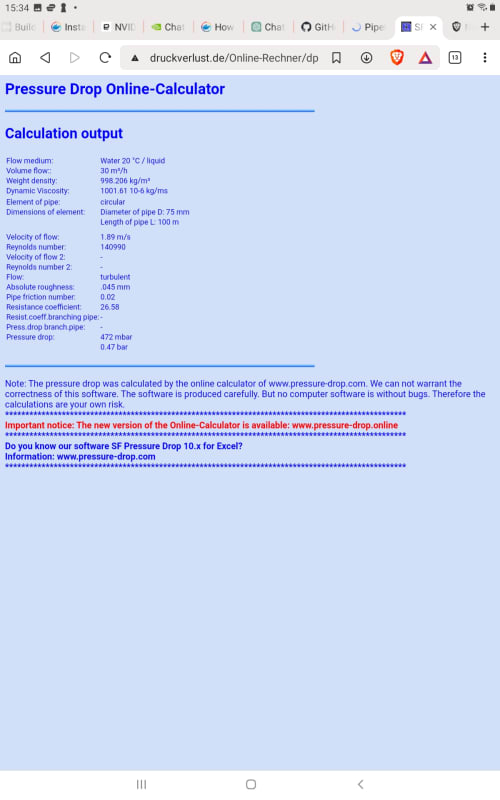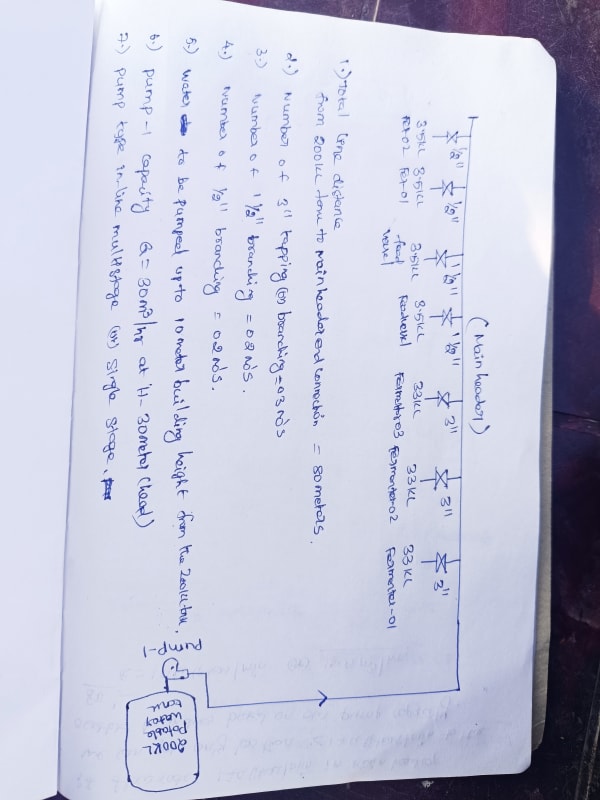https://a.co/d/9FbOB6V[/URL]]Recommended Velocity
Engineers determine pipe sizes by analyzing performance and economic parameters. Over the years, an enormous number of systems have been designed, installed, and operated. Those systems often share similar
characteristics since they were built from the same catalog of available equipment, such as pumps and control valves. It’s reasonable, then, to begin a new design project using existing system designs as a starting point.
Therefore, a Rule of Thumb is to use tables of suggested velocity for an initial determination of pipe size.
The values in the tables have been widely disseminated,and have long since lost their original source. Also, the suggested velocities are often given as ranges. You are cautioned to use the information judiciously and perform your own analysis as your piping system design develops.
Factors to consider regarding velocity:
• Low velocity may indicate a larger pipe diameter than is necessary which raises cost.
• Low calculated velocity may result in the pipe running partially full in horizontal runs.
• Low velocity can lead to laminar flow conditions which may promote fouling and will definitely hinder heat transfer (if applicable).
• High velocity may be noisy.
• High velocity can cause damage to the pipe due to erosion.
• Certain components such as check valves and control valves are designed to operate with a specific flow range; manufacturers of the components recommend minimum lengths of pipe of specified diameter upstream and downstream of their device.
Some more comments by type of service:
Clean single-phase fluids (gas or liquid) tolerate the widest range of velocity. Generally use 1.5 to 4.0 m/s (5 to 12 ft/s) for liquids, or 15 to 40 m/s (50 to 120 ft/s) for gases as a starting point. Use a Net Present Value (NPV) economic analysis to balance the initial capital cost for the piping with energy cost for moving the fluid.
...
Pipe material must be factored into the analysis. Softer materials, such as thermoplastics and copper, are more susceptible to erosion than hard materials, such as austenitic stainless steels.
...
Table 1-1 Suggested starting point for pipe sizing using fluid velocity or pressure drop criteria
...
Water, average service 1.5 to 3 m/s
...
Water, pump suction 0.3 to 1.5 m/s
...
Water, wastewater, pump suction 1 to 1.8 m/s
Water, wastewater, pump discharge 1 to 2.5 m/s
Water, wastewater, gravity 0.6 to 2.5 m/s
Quickly Estimating Pipe Lengths
Here’s a simple way to get started on a project. The objective is to create a list of pipe segments, with size and length for each, which can be used for preliminary calculations and cost estimation.
1. From a Process Flow Diagram and conceptual or preliminary General Arrangements, make a sketch that mimics the PFD in both Elevation and Plan.
2. Write down measurements in x-y-z coordinates.
3. Use those measurements to estimate the physical length of each pipe segment.
4. Add a factor of 25% to account for errors in this highly conceptual procedure.
5. Add an additional factor of 50% to 100% to account for fittings. Alternatively, if fittings are considered to be fairly well known (elbows, tees, valves, instruments, and orifices) then refer to the Equivalent Length section in this chapter to obtain data.
Example: Refer to the sketch in Figure 1-0.
Line 215 length = 2 m + 2.5 m = 4.5 m (ignore liquid level in R-200)
Line 216 length = 6 m + 2.5 m + 6 m + 10 m + 1.5 m = 26 m



![[2thumbsup] [2thumbsup] [2thumbsup]](/data/assets/smilies/2thumbsup.gif)

